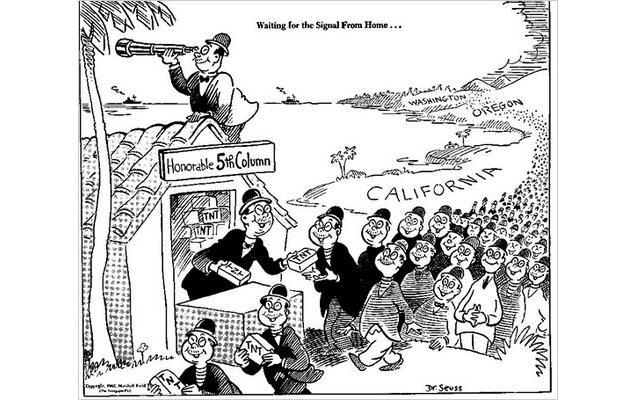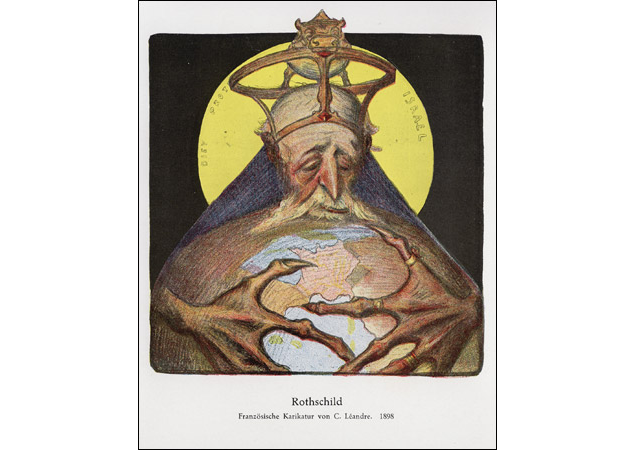More on the decline of Roman civilization
Read here both an essay by Ludwig von Mises and a reply by Sean Gabb. I agree with Gabb.
In my recent essay on the subject I attributed the decline of Roman civilization to Mediterranean piracy that arose in response to the destruction of central authority. Von Mises attributes the decline to price control.
I think Mises has a point and there is of course no doubt that there were several sources of decay. Gabb however sees price control as being at best only a small influence. His reason is that the Roman state was generally ineffective at central control. It could do major and important things like fight wars and suppress pirates (as Caesar did) but detailed social control was beyond it. Price control never really bit, in other words.
Sean Gabb is a libertarian conservative -- as I am -- so is totally opposed to the destructive folly of government price control. But we both prioritze facts over theory.
There is one way in which I don't go quite so far as Sean, however. I doubt that taxes were unimportant. I suspect that they did have substantial destructive impact. But at this point in time, there is no possibility of certainty.
But please read both authors. Both are very scholarly. Mises is of course well known but Gabb is no lightweight. He has even published a book recently that is partly in Latin. I have a copy -- to my considerable delectation. Between them, the two authors do round out our view of one of the most important episodes in human history.
**********************
The Real Islamic Threat
Two weeks after terrorists killed U.S. Ambassador Christopher Stephens and three other Americans in Benghazi in September 2012, Barack Obama announced to the UN, "The future must not belong to those who slander the prophet of Islam."

The Religion of PeaceT took his advice Wednesday in Paris, as jihadis killed 12 people for daring to "slander the prophet of Islam."
Two of the victims were police officers (one of whom was wounded and then executed), and 10 were journalists (including the editor-in-chief) for the French satirical newspaper Charlie Hebdo, which was firebombed in 2011 for printing cartoons of Muhammad. Charlie Hebdo recovered from that terrorism and published a few more cartoons skewering Muhammad and, more recently, the Islamic State. ISIL filled the terror vacuum in the Middle East after Obama claimed victory against al-Qaida ahead of his 2012 re-election bid.
Three masked men perpetrated the well-planned attack with Kalashnikov rifles and other small arms -- perhaps either a rocket or grenade launcher. They reportedly knocked on office doors asking by name for individuals who had created certain offensive cartoons. In a clip aired on French television, the attackers were recorded shouting, "We have killed Charlie Hebdo. We have avenged the Prophet Mohammad."
The men told the journalist they forced to let them in the building that they were from al-Qaida. Meanwhile, ISIL supporters praised the attack.
Not surprisingly, however, White House Press Secretary Josh Earnest initially declined to call it terrorism: "[T]his is an act of violence that we certainly do condemn. And, you know, if based on this investigation it turns out to be an act of terrorism then we would condemn that in the strongest possible terms, too." He also once again referred to Islam as a "Religion of PeaceT."
And the White House issued a statement condemning the attacks while not mentioning the words Islam, Muslim or jihad.
Former DNC Chief Howard Dean flat out denied Islam's culpability: "I stopped calling these people Muslim terrorists. They're about as Muslim as I am. I mean, they have no respect for anybody else's life. That's not what the Koran says. ... I think ISIS is a cult. Not an Islamic cult. I think it's a cult."
Meanwhile, numerous media outlets cowered in fear, refusing to show the Charlie Hebdo cartoons, blurring them out if images were shown at all. By contrast, the Associated Press and other outlets had no problem showing the "piss Christ" "art" some years ago.
Not cowering, however, was cartoonist and Charlie Hebdo editor Stephane Charbonnier, who was killed Wednesday. In 2012, he said, "I prefer to die standing than living on my knees."
The Obama administration clearly would rather kneel, or at least bow. Yes, Secretary of State John Kerry declared the murdered French journalists "martyrs for liberty," and said we "wield something that is far more powerful" than the weapons the jihadis used. But, again, it was his boss who said, "The future must not belong to those who slander the prophet of Islam."
Ironically, in 2012, Obama was condemning an obscure Internet video defaming Muhammad, which his administration blamed ahead of the 2012 presidential election for the al-Qaida attack on Benghazi. Obama's campaign was built on having defeated al-Qaida. And not only did he criticize free speech, U.S. taxpayers footed the bill for ads in Pakistan condemning the video.
Not only will Obama not stand for such "slander," but he has been regularly releasing terrorist leaders from Gitmo, who historically just return to their deadly trade.
While there was much media handwringing about freedom of speech after North Korea compelled Sony to censor a satirical movie, the real threats to free speech are Islamist terrorists. For example, instead of firing off a nasty letter to the editor, the Paris jihadis brutally murdered Charlie Hebdo employees.
Also noteworthy is that the police who initially responded to the attack were, incredibly, unarmed and quickly fled. Indeed, given all the videos that were shot of this attack, it's too bad that Paris is a gun free zone -- instead of shooting videos, someone could have been returning fire.
Furthermore, the French have allowed this Islamist menace to fester in their country for years. In fact, one of the men was a known and convicted terrorist. Now they are paying the price, and make no mistake, this menace is also festering in our homeland. Islamists, like Nidal Malik Hasan, who killed 14 people (including an unborn child) and wounded 30 others at Fort Hood, will continue to strike with increasing frequency. See also the attacks in Boston, Australia and Canada.
While the media refers to these deadly assaults as "lone wolf attacks," there are no such thing. Nor is there a "homegrown" Western threat. All these actors are part of an ideological Islamist web that is not Western. (Anyone for terrorist profiling?)
SOURCE
***************************
Mark Steyn: 'A Lot of People Will Retreat Even Further Into Self-Censorship'
Wednesday's terror attack on Charlie Hebdo in Paris will make major Western newspapers even more fearful to say anything about Islam, conservative pundit Mark Steyn warned on Wednesday.
"I think one consequence of this is that a lot of people will retreat even further into self-censorship," Steyn told Fox News's Megyn Kelly.
In fact, several major newspapers on Wednesday, in reporting on the Paris attack, obscured the cartoon images of Mohammed published by Charlie Hebdo.
"The New York Daily News won't even show -- and it dishonors the dead in Paris by not even showing properly the cartoons. They pixilated Mohammed out of it, so it looks like Mohammed is into the witness protection program, but they left the hook-nose Jew in, and that exactly gets to the double standard here.
"You can say anything you like about Christianity, you can say anything you like about Judaism, but these guys -- everybody understand the message that if you say something about Islam, these guys will kill you.
"And we will be retreating into a lot more self-censorship if the pansified Western media doesn't man up and decide to disperse the risk. So they can't just kill one little small French satirical magazine, they've got to kill all of us."
Steyn noted that Charlie Hebdo was one of the few publications willing to reprint the Danish Mohammed cartoons in 2006: "I'm proud to have written for the only Canadian magazine to publish those cartoons," Steyn added.
"And it's because The New York Times didn't, and Le Monde in Paris didn't and the London Times didn't, and all the other great newspapers of the world didn't, that they (Charlie Hebdo) were forced to bear a burden that should have been more widely dispersed."
The cartoons have become a news story, especially after people have been killed for them, Steyn said: "But the fact that major newspapers still didn't have the courage to show these cartoons after they became a news story, is why these brave men at Charlie Hebdo had to bear the burden almost single-handed."
SOURCE
******************************
7 Offensive Images The New York Times Wasn't Afraid to Publish
Dean Baquet, the executive editor of The New York Times, is defending his decision not to reprint any Charlie Hebdo cartoons depicting Mohammad with an argument that might confuse Times readers. Today he told Politico: "We don't run things that are designed to gratuitously offend."
This dictum is confusing because it's false: On many occasions the paper of record has printed images that are "designed to gratuitously offend." Here are 7 examples; there are surely more.
1. The Times printed this anti-Semitic cartoon in 2010:

2. This racist Dr. Seuss drawing in 2011:

3. This anti-Semitic caricature in 2005:

More HERE
****************************
California Just Started Another Insane Government Project
Talk about a trainwreck. Today, California broke ground on another disastrous government-funded project: high-speed rail that will eventually go from San Francisco to Los Angeles.
The project is estimated to cost $68 billion. The plan is that the private sector will ultimately invest around one-third of the total cost, but so far, there have been no takers. And it's no wonder. It's hard to see how this project makes sense.
Backers say the train will be able to make the trip between San Francisco and Los Angeles in under 2 hours, 40 minutes. However, according to a 2013 Reason Foundation study, it's likely the trip will ultimately take around four hours (and sometimes closer to five hours) for various reasons (for example, the high-speed train will share tracks with slower trains).
To put that into context, consider this: A flight from San Francisco to Los Angeles is about 1 hour, 15 minutes. Driving, if there isn't traffic, takes a little under six hours-more time than the train would take, but you also have a vehicle at the end of your trip. (Neither San Francisco nor Los Angeles are cities easy or convenient to navigate via public transit, although San Francisco certainly has more options than Los Angeles.)
So in other words, it's a $68 billion project to build a method of transit that combines the longer time of driving with the lack of convenience of flying (that is, arriving without a car).
And this is all assuming the full project is completed. Currently, the state has only $12.6 billion-from federal funding and a voter-approved bond measure-ready for the project.
The first steps will lead to tracks connecting Fresno and Bakersfield-two cities that have no public transportation other than buses. It's hard to see why a big market of people would be looking to take the high-speed train between these two places, which are already connected by highways and train.
Furthermore, it's possible that the high-speed rail train, rather than making a profit or breaking even, will lose even more money when operating. Remember, that $68 billion is just to build it.
From the 2013 Reason Foundation study:
Even if the system managed to equal European train ridership levels it would hit just 7.6 million rides a year. Thus, ridership in 2035 is likely to be 65 percent to 77 percent lower than currently projected.
As a result of these slower travel times, higher ticket costs and low ridership, California taxpayers should expect to pay an additional $124 million to $373 million a year to cover the train's operating costs and financial losses.
Heritage Foundation transportation analyst Emily Goff offers yet another possible snag: "It's typical for big-ticket infrastructure projects like this train to experience cost escalations-of gargantuan proportions. Cue Northern Virginia's defunct Arlington Streetcar and Washington Metro's Silver Line. We'll see any increases in the $68 billion cost reflected in more severe operating losses down the line."
California's struggling enough as is. Building a costly high-speed rail train with few obvious consumers is a mistake-and one that will likely cost taxpayers dearly.
SOURCE
*****************************
For more blog postings from me, see TONGUE-TIED, EDUCATION WATCH INTERNATIONAL, GREENIE WATCH, POLITICAL CORRECTNESS WATCH, AUSTRALIAN POLITICS, and Paralipomena (Occasionally updated) and Coral reef compendium. (Updated as news items come in). GUN WATCH is now mainly put together by Dean Weingarten.
List of backup or "mirror" sites here or here -- for when blogspot is "down" or failing to update. Email me here (Hotmail address). My Home Pages are here (Academic) or here (Pictorial) or here (Personal)
****************************



